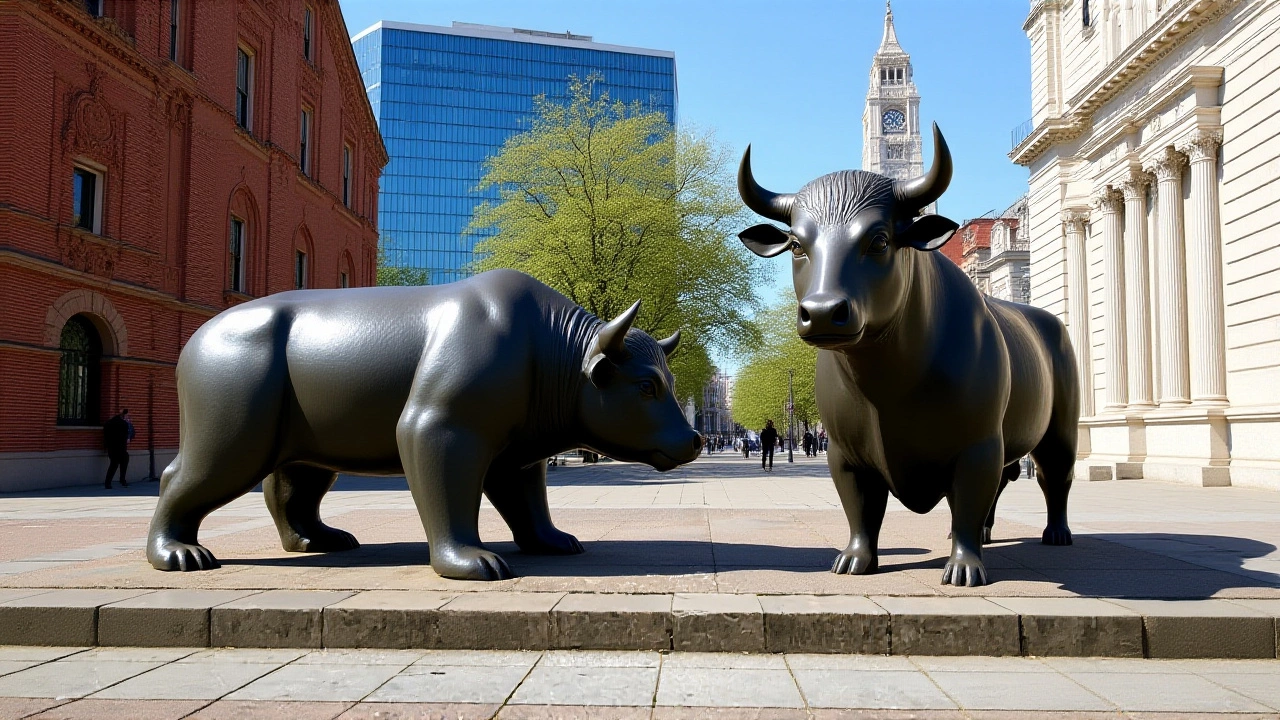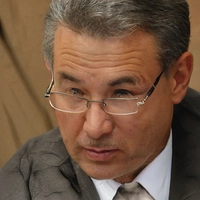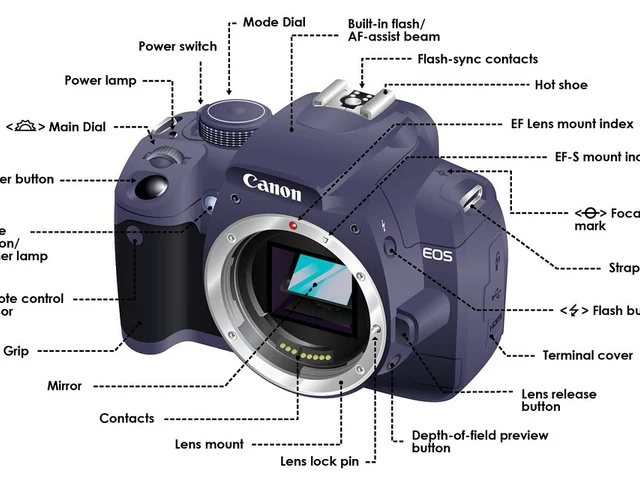On Monday, October 27, 2025, U.S. markets roared to life as trade tensions between the U.S. and China eased — but the real drama unfolded in biotech and tech stocks. While the S&P 500 rose 0.94% and the Nasdaq 100 jumped 1.56%, investors were fixated on the wild swings of individual companies: Qualcomm soared on AI chips, Tesla gained ground on strong earnings, Intellia Therapeutics collapsed after halting trials, and Avidity Biosciences skyrocketed after a $12 billion buyout. The day wasn’t just about numbers — it was about trust, innovation, and the fragile balance of hope in medicine and technology.
Trade War Cooling Sparks Market Rally
Before the stock moves took center stage, the broader market got a lift from diplomacy. After backchannel talks between U.S. and Chinese officials over the weekend of October 25–26, 2025, President Donald Trump told reporters aboard Air Force One, "I've got a lot of respect for President Xi, and I think we're going to come away with a deal." With a high-stakes meeting scheduled for Thursday, October 30, 2025, in Washington, D.C., investors interpreted the tone as a sign that tariffs might be eased. The SPDR S&P 500 ETF (SPY) climbed 0.94%, the Invesco QQQ Trust (QQQ) surged 1.56%, and the DIA added 0.42%. It wasn’t a breakout, but it was enough to give tech and growth stocks the green light.
Qualcomm’s AI Breakthrough Ignites Stock Surge
While everyone was watching biotech, Qualcomm quietly stole the show. The San Diego-based chipmaker unveiled two new AI accelerator chips — the AI200 and AI250 — designed specifically for enterprise cloud servers and data centers. The market didn’t just like it; it went wild. Shares jumped 11% to 12.37% in midday trading, bringing its year-to-date gain to 22%. Analysts say the chips could compete directly with NVIDIA’s data center offerings, especially as companies scramble to build in-house AI infrastructure without relying on cloud giants. "This isn’t just an upgrade," said one Silicon Valley hardware engineer who spoke anonymously. "It’s Qualcomm saying, ‘We’re not just a phone chip company anymore.’" The move signals a major pivot — and could redefine the next phase of the AI race.
Tesla’s Strong Q3 Earnings Fuel Price Target Hike
Meanwhile, Tesla posted its best quarterly financials in over a year. Revenue beat expectations, gross margins expanded, and free cash flow hit $1.8 billion — its highest since early 2024. The numbers prompted Cantor Fitzgerald, the New York-based investment bank, to raise its price target on Tesla stock from $355 to $510 — a 44% upside — while keeping its "Overweight" rating. The market responded with a 5.98% gain. Investors are betting that Tesla’s energy storage division and AI-driven autonomy software are finally pulling their weight. "They’re not just selling cars anymore," noted a portfolio manager at BlackRock. "They’re selling infrastructure. And that’s worth more."
Intellia’s Clinical Trial Pause Triggers 45% Crash
But the day’s most sobering moment came from Cambridge, Massachusetts-based Intellia Therapeutics. Shares cratered 43.2% to 45% after the company announced it was pausing enrollment in its two Phase 3 trials — MAGNITUDE and MAGNITUDE-2 — testing its gene-editing therapy nex-z for transthyretin amyloidosis. The pause followed an "unanticipated safety event" in one patient, though the company didn’t specify details. CEO John Leonard said the firm is working with global regulators to determine next steps. "We’re focused on ensuring the health of this patient," he said. "Patient safety is non-negotiable." The news hit hard because these trials had enrolled over 700 patients, with more than 450 already receiving doses. Nex-z had been seen as a potential blockbuster — a one-time gene-editing treatment for a rare, fatal disease that currently requires lifelong drugs. Intellia’s stock had more than doubled in 2025 before Monday’s plunge. Now, investors are asking: Was the optimism too fast? "This is the cost of cutting-edge science," said Dr. Lena Ruiz, a biotech analyst at Bernstein. "You can’t rush gene editing. One adverse event can undo years of hype."
Avidity Biosciences Sold for $12 Billion — A Biotech Dream Exit
Amid the chaos, one company had a fairy-tale outcome. Avidity Biosciences, a San Diego firm pioneering antibody-oligonucleotide conjugates, agreed to be acquired by Swiss giant Novartis AG for $12 billion — a nearly 42% premium to its Friday closing price. The deal hinges on Avidity’s proprietary platform, which delivers gene-silencing drugs directly to muscle tissue — a breakthrough for rare muscle diseases like myotonic dystrophy. "This is the gold standard for biotech exits," said venture capitalist Mark Hines. "They didn’t just build a drug. They built a platform. And Novartis bought the whole future." The acquisition also signals a broader trend: Big pharma is hungry for precision delivery tech. With Avidity’s platform, Novartis could potentially treat dozens of rare diseases with one system. The stock jumped from $68 to $96 in minutes.
What’s Next for These Stocks?
Qualcomm’s AI chips could become a major revenue driver by 2027 — but competition from AMD and NVIDIA is fierce. Tesla’s rally depends on whether its Full Self-Driving software can scale profitably. Intellia’s future hangs on the investigation’s outcome — if the issue is isolated, trials could resume by Q1 2026. But if it’s systemic, the company may need to redesign the therapy entirely. And Avidity? It’s now part of Novartis. The brand may disappear, but its science won’t.
Other Notable Moves
BridgeBio Pharma rose 17%, TSLL gained 11.78%, and DPCM Capital jumped 9%. Meanwhile, Fortress Value Acquisition Corp fell 6.5% and Albemarle dropped 7.5% on weaker lithium demand forecasts. The market’s message was clear: innovation wins. Safety matters. And deals still move markets.
Frequently Asked Questions
Why did Intellia’s stock crash so hard even though only one patient was affected?
Gene therapy is high-risk, high-reward. A single safety event in a Phase 3 trial can trigger regulatory scrutiny, investor panic, and even lawsuits — especially for companies with no approved drugs. Intellia’s entire valuation was based on the promise of nex-z. One adverse event undermines that narrative, regardless of whether it’s an isolated case. Regulators may require extensive retesting, delaying market entry by years.
How does Qualcomm’s new AI chip compare to NVIDIA’s offerings?
Qualcomm’s AI200 and AI250 are designed for edge and enterprise cloud use, not just data centers. They’re more power-efficient and optimized for real-time inference tasks — ideal for telecom and industrial AI. NVIDIA dominates raw compute power, but Qualcomm’s chips could win in cost-sensitive, energy-constrained environments. It’s not a direct replacement — it’s a complementary option.
Why did Novartis pay $12 billion for Avidity Biosciences?
Avidity’s antibody-oligonucleotide conjugate platform can deliver gene-silencing drugs directly to muscle cells — something no other company has done reliably. This opens doors to treating over 50 rare muscle diseases. Novartis, which has struggled to grow its rare disease portfolio, saw this as a once-in-a-decade opportunity to own the delivery mechanism — not just one drug.
What does Tesla’s price target hike to $510 mean for investors?
It reflects growing confidence that Tesla’s software and energy businesses are now as valuable as its car sales. The $1.8 billion in free cash flow and improved margins suggest cost discipline is working. If Full Self-Driving becomes profitable in 2026, Tesla could become a tech stock disguised as an automaker — a shift that justifies the valuation jump.
Are these stock moves connected to the U.S.-China trade talks?
Indirectly, yes. The easing of trade tensions boosted investor risk appetite, especially for tech and biotech — sectors sensitive to global supply chains and capital flows. But the individual stock moves were driven by company-specific news. The trade relief just created the environment where these big swings could happen without market-wide panic.
What’s the timeline for Intellia’s trials to resume?
Intellia hasn’t given a timeline, but experts estimate 3–6 months. The company must submit a detailed safety analysis to the FDA and other global regulators. If the issue is traced to a manufacturing flaw or dosing error, resolution could be quick. If it’s tied to the gene-editing mechanism itself, the program could be shelved — a devastating blow to the entire field of in vivo CRISPR therapies.











